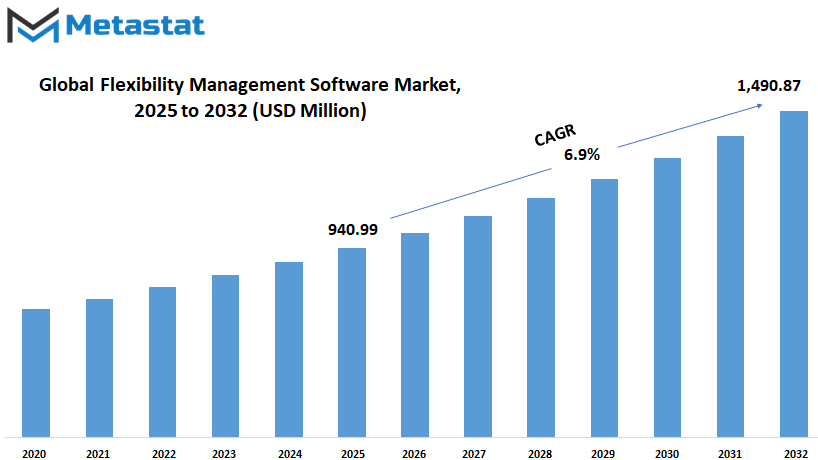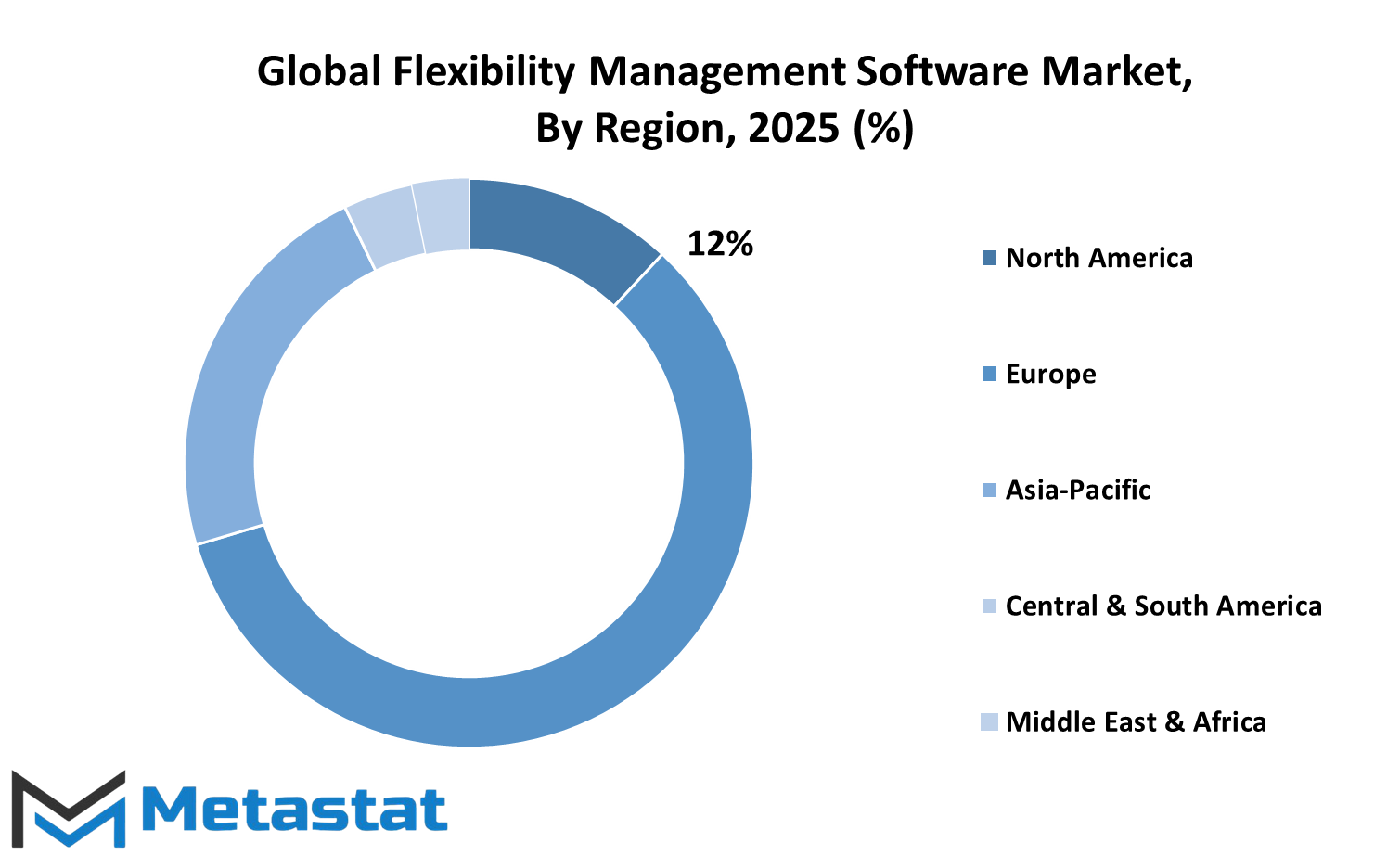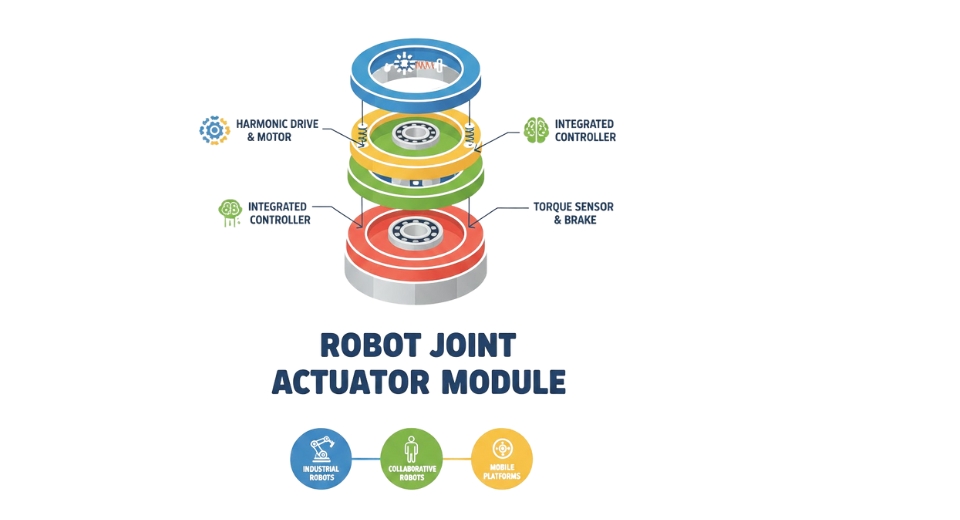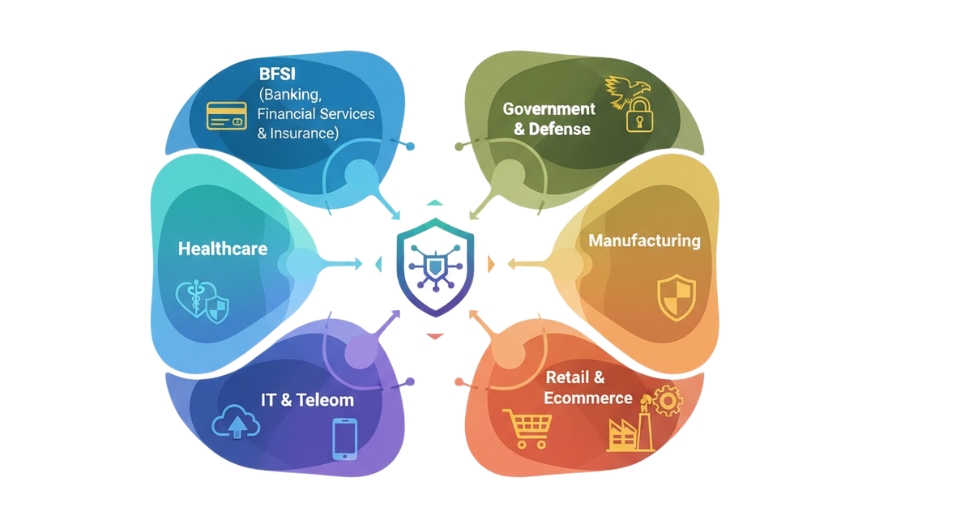MARKET OVERVIEW
The global flexibility management software market is an emerging area within the energy and utility technology sector, providing niche digital platforms with the aim of maximizing the flexible capacity of distributed energy resources. The market is concentrated on software solutions that will manage and orchestrate the dispatch of flexible assets such as batteries, electric vehicles, HVAC systems, and renewable generation to support grid stability and achieve maximum economic returns. As grids continue to decentralize, they will find these platforms becoming indispensable tools for system operators, aggregators, and energy suppliers that will need real-time visibility, automation, and decision-making capacity to handle flexible demand and supply.
Different from traditional energy management systems, which are designed to help manage static interactions among prosumers, market operators, and devices operating on various levels of the energy value chain, these solutions are specifically designed to facilitate dynamic interactions among them. Future platforms in the global flexibility management software market will not only offer monitoring dashboards; they will utilize sophisticated analytics, machine learning, and automated control protocols that will be integrated with grid-edge technologies and will enable the participation of aggregated flexibility in local, national, and cross-border markets. Through secure communication and precise forecasting, these systems will enable more responsive and scalable methods for managing distributed flexibility.
The global flexibility management software market will be represented by a mix of players such as independent software vendors, energy service companies, and solution providers that are owned by utilities. Each will provide different functionalities based on the target application residential load control, industrial flexibility management, or virtual power plant coordination. As digitalization becomes the cornerstone of grid modernization efforts, flexibility software platforms will be designed to accommodate regulatory models and business plans that will incentivize responsiveness and grid engagement. As a result, this will promote standardization of communication protocols and performance metrics across regions.
What differentiates the global flexibility management software market is its future focus on transactive energy models. These systems will enable two-way flows of energy and market signals, facilitating an environment in which both supply and demand will adapt dynamically to shifting grid conditions. With energy transition objectives requiring more agility in balancing intermittent generation with use, software platforms in this arena will provide the digital infrastructure to make this happen. They will be built to work across multiple market environments and will change dynamically to accommodate shifting grid structures, market dynamics, and user patterns.
Developers will be called upon to bring modular architectures and API-centric environments with them that will both complement legacy infrastructure and accommodate emerging technologies such as AI optimization and blockchain-based transactions. Outside of grid operators, municipalities, industrial clusters, and residential aggregators will increasingly rely on these systems to unlock localized value from flexible energy habits. Not only will these systems enable technical grid requirements but also economic engagement for users on all ends.
Consequently, the global flexibility management software market will not just enable the digitalization of power systems; it will underpin an era of future energy where flexibility is monetized, optimized, and integrated as a central operational asset rather than a secondary function.
Global flexibility management software market is estimated to reach $1,490.87 Million by 2032; growing at a CAGR of 6.9% from 2025 to 2032.

GROWTH FACTORS
The global flexibility management software market is slated to develop at a steady rate as the energy industry continues to move towards smarter and more adaptive measures. A key driver for this development is the increasing use of renewable sources of energy. With increasing installations of solar panels and wind farms in national grids, energy supply becomes increasingly unpredictable. The shift necessitates that there be software to balance the grid in real time. Tools for flexibility management will be key to controlling the flow of energy, ensuring supply equals demand, even as renewable sources waver.
Another driver of the growing demand is the growing demand for smart energy management in both industrial and domestic environments. Industries seek to minimize wastage of energy and reduce costs of operation, while residents need to manage energy consumption better. Such behavioral changes make them adopt sophisticated software that can monitor, predict, and regulate usage of energy on the basis of current data. This is not a short-term phenomenon but indicates a wider change in the way energy will be consumed and controlled in the long run.
While these promising changes are under way, however, some issues may temper the growth of the global flexibility management software market. Costly upfront expenditures and the difficulty in installing these systems may deter small utilities and companies from investing. These businesses might not have the technical skills or resources to implement and get the full benefit of these tools to their fullest potential. Additionally, their installed bases already contain older systems that don't work well with newer software. This incompatibility makes it more difficult for new technologies to work as planned, leading to delays and additional expenses.
On the other hand, the advent of decentralized energy systems offers a powerful growth opportunity. Greater numbers of individuals and companies are becoming prosumers of energy through the use of their own solar panels or battery storage units. This trend generates the necessity for improved tools to govern when and how energy is stored or shared. Software that enables this type of local energy control will be crucial in the future. With an increasing number of users actively engaged in energy networks, the need for versatile and user-friendly software will grow.
In the future, sustained innovation and more affordable pricing plans may overcome current barriers. If these solutions become more manageable to install and utilize, even small-scale customers will use them. This will further propel the global flexibility management software market toward robust and sustained growth.
MARKET SEGMENTATION
By Type
The global flexibility management software market is anticipated to witness significant transformations by 2025, as the industry will be influenced by emerging technology, increased needs for data, and flexible work systems. As businesses continue to move towards digital platforms, the way software is utilized and supplied will continue to change. By 2025, the global flexibility management software market by type will demonstrate distinct differences between Cloud-Based, Hybrid, and On-Premises solutions, all catering to specific business requirements. The Cloud-Based segment is projected to reach USD 466.73 million. The growth indicates a strong pattern where organizations demand software that is easily scalable and available remotely. Cloud possibilities make the updates occur in real time and enable teams to collaborate even when located in different parts. Such a system is appropriate in an era where work will become more remote and mobile.
Hybrid models are also on the rise and are poised to be worth USD 192.43 million by the year 2025. These provide a combination of both cloud and on-premise systems, allowing businesses to maintain some processes internally while getting to appreciate the flexibility of cloud solutions. With security and command continuing to be an issue for certain firms, hybrid models will be used as a transition model between old systems and new systems. Such middle-of-the-road strategy attracts those firms that desire change but still require the added layer of control within their internal systems.
On the other hand, On-Premises systems are estimated to be worth USD 281.82 million in 2025. While the cloud is expanding rapidly, there still exist companies that insist on locally managed software because of certain data regulations, security protocols, or even preference. These systems provide total control and tend to be preferred by industries dealing with sensitive information. But even this sector will gradually change in the near future as software becomes more sophisticated and simpler to administer from the cloud.
In the future, the global flexibility management software market will be determined by the demand for quicker tools, real-time data, and systems that can adapt to business dynamics without any hesitation. Businesses will gravitate more towards solutions that facilitate smoother processes and more convenient information access. With increasing demands, the need will shift towards systems that provide not just flexibility but also sustained value. This will compel developers to continue developing smarter and more dependable tools that are able to meet current and future demands alike.
By End-Users
The global flexibility management software market is expanding steadily as more sectors seek wiser means to coordinate energy consumption and react to changing demands. The industry is becoming critical in aiding various sectors in achieving a better balance between energy supply and demand. It is apparent when one looks into the future that there will be a continued increase in the demand for flexibility in energy systems, and software will have a critical part to play in facilitating this transition. As increasing parts of the world shift towards renewable energy, there will be an increasing demand for solutions that are able to change usage patterns in real-time. This is where flexibility management software comes in as an essential tool.
Various sectors are now beginning to depend upon this technology. In the utilities industry, for instance, businesses are employing this software to maintain power systems within stability. It enables them to react faster to changes, preventing blackouts or energy wastage. With increasingly complex power grids, particularly when renewables are factored in, having tools that can monitor and vary energy flow is not only beneficial but essential. Utilities will likely remain at the forefront of driving this, leveraging software to minimize expense and maximize service quality.
Governments are also interested in flexibility management software. Some are enacting policies to reduce carbon emissions, and this technology helps achieve that. Governments can more effectively manage their energy consumption by adopting it for use in public buildings and infrastructure, as an example. Public agencies may even mandate the use of such systems in government-supported projects in the future, driving the market further.
The industrial market is expected to take up this software in increasing amounts as firms search for energy-saving methods and ways to comply with environmental standards. It can result in significant savings if the software can shift or lower energy consumption at peak hours. The software also makes firms more stable partners in energy networks, particularly during periods of heavy use.
Residential use is also anticipated to increase, though at a more modest rate. As smart home technology becomes increasingly popular, homeowners will realize the benefit in controlling their energy more intelligently. Eventually, this may become an included feature in new homes.
Commercial buildings such as offices and shopping malls are also going in this direction. These buildings consume a lot of energy and can make use of devices that optimize the use of energy. In the future, the global flexibility management software market will keep on growing as all these groups of users continue to find new ways to accommodate and gain from intelligent energy management.
By Deployment Mode
The global flexibility management software market is anticipated to expand progressively in the future as companies from various industries keep seeking improved methods of managing operations. This software aids organizations in managing changing demands, optimizing energy consumption, and enhancing system control. As businesses grow and technologies develop, there remains an increasing demand for adaptable systems that real-time adjust. This is particularly crucial for sectors such as utilities, manufacturing, and logistics where small variations have a dramatic impact on performance and cost.
Regarding how this software is configured, there are three predominant choices: Public Cloud, Community Cloud, and Private Cloud. Each of these has its own advantages, and the selection will mostly be based on the business size, the degree of control required, and how much security is needed. Public Cloud services are widely used as they are inexpensive and scalable. They suit businesses that require quick access without needing to invest in huge infrastructures. Such services are kept by third parties and used by many customers, making them suitable for firms that don't deal with sensitive information.
However, the Community Cloud is suited for collections of firms that aim for the same purpose or conform to the same regulations. With this kind of configuration, they get to use the same infrastructure but maintain more control than they would get in the case of a Public Cloud. It finds a balance between cost and control, which is beneficial to industries with common concerns over data security and processing. The Private Cloud is more suitable for companies that require the most amount of data protection and customization. It provides full control since it's designed for one firm alone. While it costs more, a lot of companies find it worth it for its customized features and security.
In the future, the global flexibility management software market will witness growth in the adoption of all three deployment types. As automation and artificial intelligence become widespread, organizations will require platforms that not only adapt to unexpected changes but also anticipate them. Software with the ability to learn based on patterns in data and recommend modifications will keep companies ahead of the curve. With growing demand for effective, responsive systems, every form of cloud deployment will have its niche depending on the varied requirements of organizations globally.
By Application
The global flexibility management software market will witness gradual growth as companies in various industries continue to make a transition towards software solutions that are capable of supporting flexible operations. One such important driving factor in this regard is the manner in which companies prefer to deploy the software systems. Based on Deployment Mode, the market is also segmented into Public Cloud, Community Cloud, and Private Cloud, each with its own advantage and disadvantage.
The Public Cloud is usually the first preference for companies seeking flexible, affordable solutions. Because it's handled by third-party providers, businesses can avail themselves of the software without making huge investments in tangible infrastructure. In the future, this route will continue to be popular among startups and small companies. It provides speed, frequent updates, and the option of scaling up or down as needed. With increasing numbers of companies moving into the digital arena, there will be greater demand for quick and adaptable solutions and Public Cloud will be an increasingly significant portion of the marketplace.
Community Cloud enables several organizations to collaborate within a unified system that is appropriate for common objectives or needs. This is handy in industry sectors such as healthcare or education, in which customers require systems based around particular standards or regulations. In time, Community Cloud usage will increase in sectors where collaboration and collective compliance are paramount. It provides the security and customization of a Private Cloud but with collective cost and support among users with similar requirements.
Private Cloud is still the first choice for companies that would like to have complete control over their data and systems. While it takes more money to set up, the additional level of privacy and customized features make it the best choice for bigger businesses or those that are in highly sensitive industries. In the coming years, as data privacy becomes increasingly important, Private Cloud configurations will be in demand. Businesses will desire to create systems that they have total control over and are responsible for, even while they still embrace versatile software.
The global flexibility management software market not only will expand but also revolutionize the manner in which companies manage their digital instruments. Every Deployment Mode Public Cloud, Community Cloud, and Private Cloud will have its contribution depending on various user demands and priorities. With technology evolving, companies will seek smarter, safer, and more responsive means to manage their functions. Software built for flexibility will become central to how organizations plan for the future, making deployment choices more important than ever.
|
Forecast Period |
2025-2032 |
|
Market Size in 2025 |
$940.99 million |
|
Market Size by 2032 |
$1,490.87 Million |
|
Growth Rate from 2025 to 2032 |
6.9% |
|
Base Year |
2024 |
|
Regions Covered |
North America, Europe, Asia-Pacific Green, South America, Middle East & Africa |
REGIONAL ANALYSIS
The global flexibility management software market is expanding gradually as organizations worldwide continue to transform the handling of energy, data, and operating resources. In the future, the possibility of this market transforming the management of energy consumption and resource use is evident. With technology rapidly changing, companies are in search of more intelligent devices that optimize demand and supply balancing effectively. This is where flexibility management software comes into play. It enables businesses to adapt consumption according to their present needs, which not only conserves money but also aids in sustainability.
Geographically, this market has been divided to see how regions are developing. The lead in North America is being taken by countries like the U.S., Canada, and Mexico. The U.S., especially, has witnessed increased investment in energy management devices because it aims to decrease carbon emissions and enhance infrastructure. Canada and Mexico are following the same path, with the public and private sectors examining digital devices that help in energy efficiency.
Europe is a close second, with the UK, Germany, France, and Italy solidly contributing. Europe's aggressive promotion of renewable energy sources has caused businesses to increasingly use software that can deal with flexible systems. With an increasing number of buildings and factories looking to decrease their environmental footprint, demand for such software is bound to increase. Even the Rest of Europe is not far behind, particularly in areas that are attempting to upgrade their energy infrastructure.
In Asia-Pacific, India, China, Japan, and South Korea are leading the way. Their expanding industrial sector and urbanization have prompted them to take energy management seriously. These nations would thus become major contributors to the global flexibility management software market. India and China, with their sizeable populations and surging energy requirements, are most significant. Software solutions that are capable of managing sudden swings in power consumption will be crucial here. Other regions of Asia-Pacific are also closing in, albeit at different rates.
South America is also improving, with Brazil and Argentina looking into measures to increase the efficiency of their energy consumption. Governments there are beginning to recognize the benefits of software solutions that provide greater control over energy systems. At the same time, the Middle East & Africa market is also coming to the forefront, with nations such as those in the GCC, Egypt, and South Africa gradually accumulating interest in adaptive energy systems. As the global economy develops, these markets might become active players in the future.

COMPETITIVE PLAYERS
The global flexibility management software market is poised to become a very vital part of how energy systems function around the globe. As the need for smarter energy solutions continues to escalate, the necessity of the software that facilitates better supply and demand balancing is becoming increasingly urgent. Legacy energy grids are being stretched to the limit as renewable energy sources such as solar and wind increasingly penetrate their networks, which are not always reliable. It is here that flexibility management software comes in, providing tools to shift energy loads, balance demand, and facilitate the incorporation of clean energy into the grid.
In the future, this market will grow as nations pay increasing attention to sustainable energy policy and smart grid technologies. The software assists utility providers and electricity consumers to adapt in real time to variations in electricity price and availability. Its capability to switch energy use rapidly is precious, particularly as global energy consumption habits and climate change pressure development towards a move from fossil fuels. Companies and governments increasingly are investing in technologies that can learn to respond to evolving conditions and make energy systems more efficient and reliable.
Several prominent firms are at the forefront in this area. Siemens AG and Schneider Electric SE have already built sophisticated platforms that assist in energy usage management within extensive systems. IBM Corporation and General Electric (GE Digital) are utilizing data and artificial intelligence to enhance the distribution and consumption of energy. Uplight, Inc. and GreenSync Pty Ltd are also driving innovations toward user behavior and intelligent energy storage.
Mitsubishi Electric Corporation, Honeywell International Inc., and Eaton Corporation are looking into making factories and buildings smarter so that they can change their energy consumption based on grid needs. Hitachi Energy and Enel X are developing broader grid solutions, such as how to engage electric vehicle and battery storage systems. AutoGrid Systems and Flexitricity are working on demand response, a process in which users decrease or reschedule their electricity consumption during peak hours.
As the market advances, the global flexibility management software market will not only optimize energy consumption but also play a part in building a cleaner future. Its contribution will increase as more areas seek flexible, digital solutions to enable renewable power and lower emissions. The transition is not only technological it's about building a wiser and more resilient energy future for all.
Flexibility Management Software Market Key Segments:
By Type
- Cloud-Based
- Hybrid
- On-Premises
By End-Users
- Utilities
- Government
- Industrial
- Residential
- Commercial
By Deployment Mode
- Public Cloud
- Community Cloud
- Private Cloud
By Application
- Energy Demand Response
- Peak Load Management
- Distributed Energy Resource Management
- Grid Optimization
- Load Forecasting
Key Global Flexibility Management Software Industry Players
- Siemens AG
- GreenSync Pty Ltd
- Schneider Electric SE
- General Electric Company (GE Digital)
- Uplight, Inc.
- IBM Corporation
- Mitsubishi Electric Corporation
- Flexitricity
- Hitachi Energy
- Next Kraftwerke GmbH
- Honeywell International Inc.
- Eaton Corporation
- Enel X
- AutoGrid Systems
WHAT REPORT PROVIDES
- Full in-depth analysis of the parent Industry
- Important changes in market and its dynamics
- Segmentation details of the market
- Former, on-going, and projected market analysis in terms of volume and value
- Assessment of niche industry developments
- Market share analysis
- Key strategies of major players
- Emerging segments and regional growth potential








 US: +1 3023308252
US: +1 3023308252






